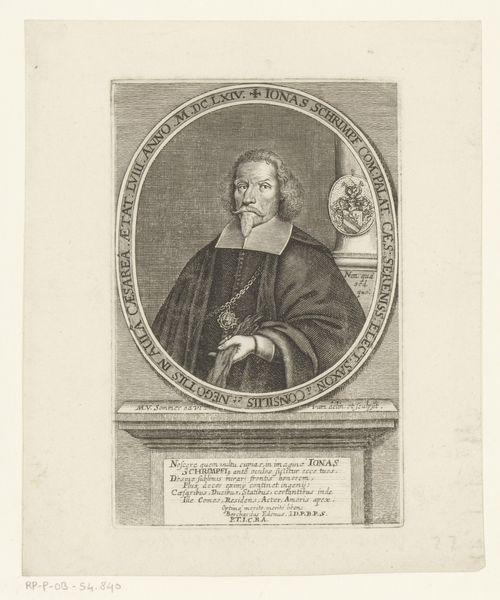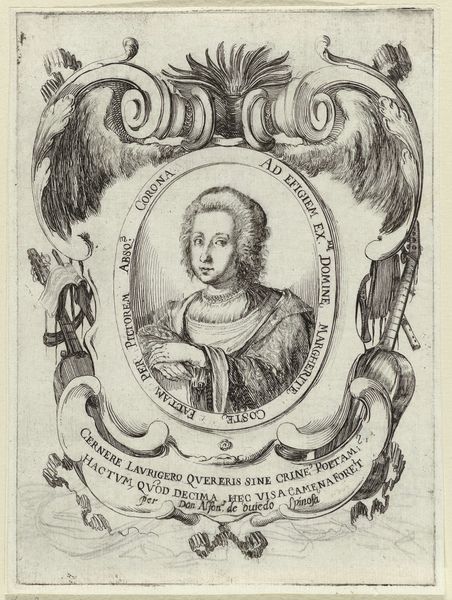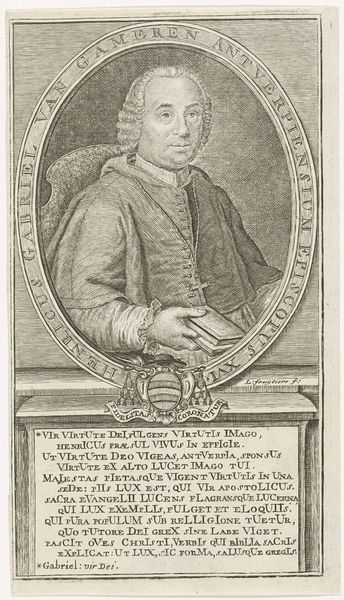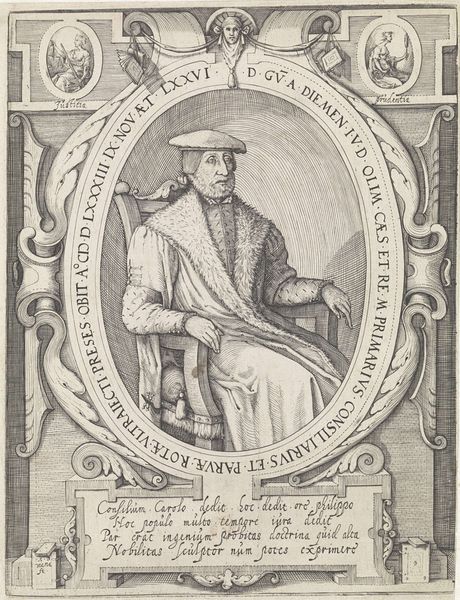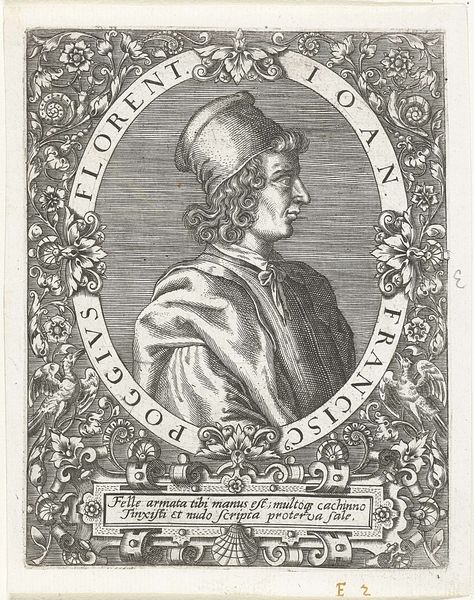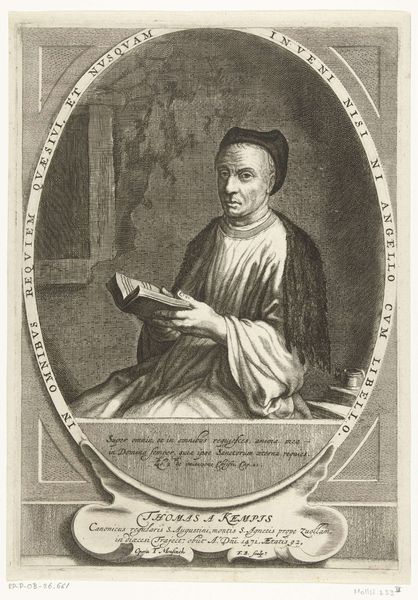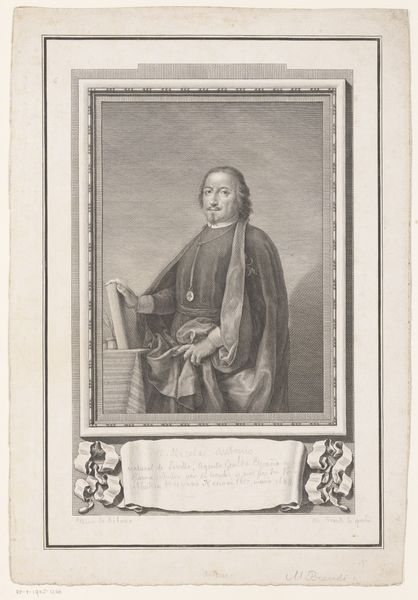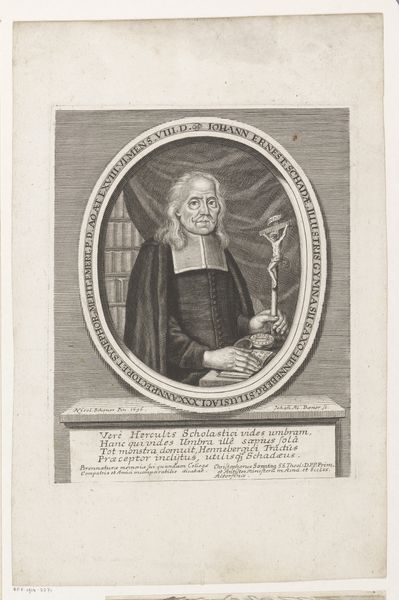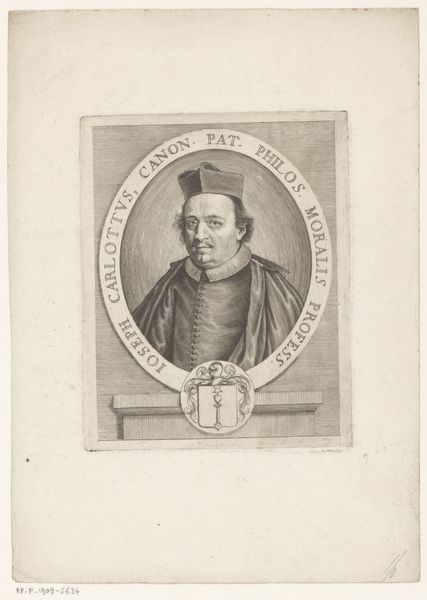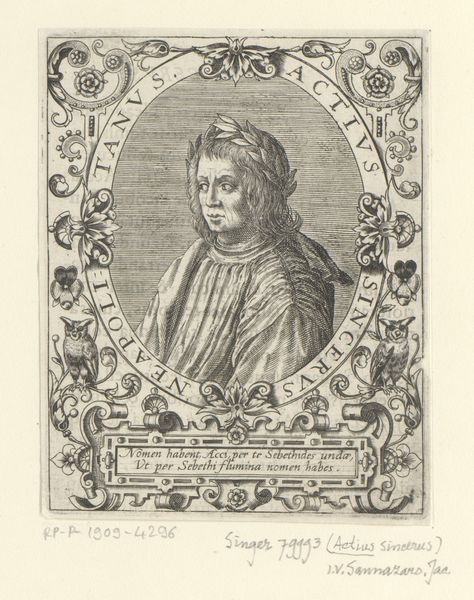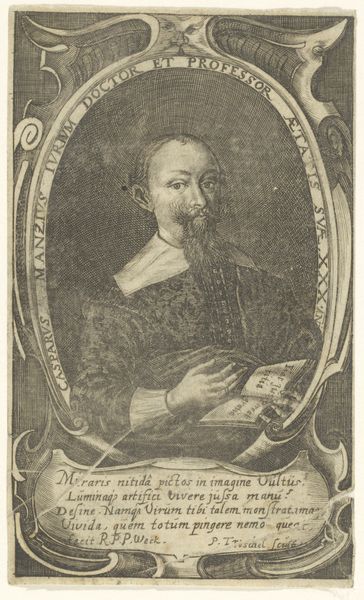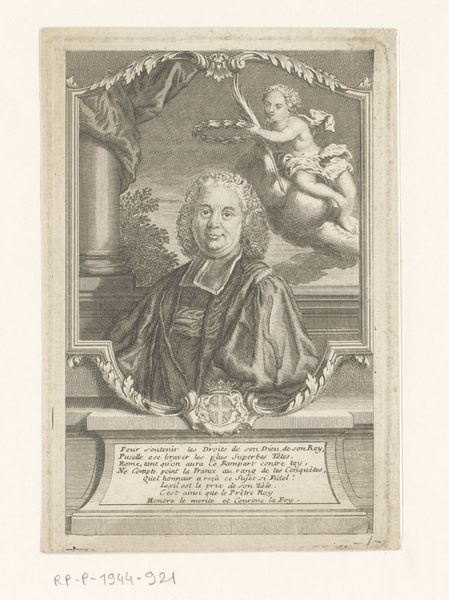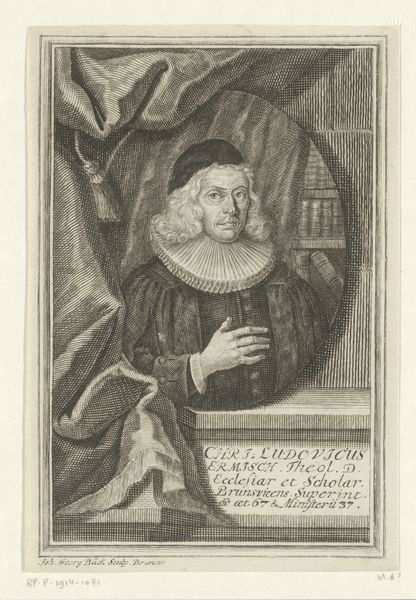
intaglio, paper, engraving
#
aged paper
#
baroque
#
intaglio
#
old engraving style
#
paper
#
portrait reference
#
19th century
#
history-painting
#
engraving
Dimensions: height 134 mm, width 87 mm
Copyright: Rijks Museum: Open Domain
Curator: Let's turn our attention to this striking intaglio from sometime between 1712 and 1744, a 'Portret van Jean-Philippe Baratier'. What strikes you first about it? Editor: The weight of all that learning, visually speaking. All those words packed onto the pages—the feeling of a young mind completely immersed, and maybe a bit burdened by it all. It feels almost theatrical. Curator: I agree. Let’s unpack that a little. Baratier, if we examine his positionality, was something of a prodigy—a linguist and scholar by the age most children were just mastering their native tongue. This engraving on paper presents him as this embodiment of Enlightenment ideals: reason, learning, and, perhaps implicitly, upward social mobility through intellectual prowess. Editor: You know, there's a bit of sadness too. The boy looks so earnest, but his expression doesn’t quite reach his eyes. The engraving style, though intricate, lends a severity that keeps me at a distance. Almost as if his genius isolates him. Curator: It's certainly a posed portrait, which was very common, designed to convey specific messages about status and virtue. Notice the books themselves, meticulously labeled as testaments to Baratier's scholarly reach – Bible, rabbinical writings, and then languages galore. His legacy hinged upon his precociousness as well as the social and economic realities of the eighteenth century that would influence the opportunities available to him, if that makes sense. Editor: It makes perfect sense, and those texts almost form a cage around him, which connects back to my sense of that almost operatic feel. He's presented as an exceptional exhibit for the age. It speaks to the pressures, as much as the privileges, of exceptionalism. Curator: Precisely. And considering that engraved portraits such as this circulated widely, Baratier's image became a signifier, and a conversation point for broader intellectual debates in Europe, solidifying his status in society as a kind of marvel and model. Editor: Looking at the bottom inscription "Tu fesais heureux Enfant par notre divin Livre" I guess Baratier felt all of that expectation too! He doesn't strike me as joyful or childlike from the art itself; the image is too serious for a young boy holding books. What I can take away from this piece is how performance and learned expectation create the picture. Curator: Yes, a performance captured forever. So while it initially reads as simple image, “Portrait of Jean-Phillipe Baratier” reveals just how nuanced and layered eighteenth century society truly was through the image, presentation and reception of scholarly life. Editor: Ultimately it’s a touching picture that I will contemplate as the tension and wonder of extraordinary youthful ability.
Comments
No comments
Be the first to comment and join the conversation on the ultimate creative platform.
